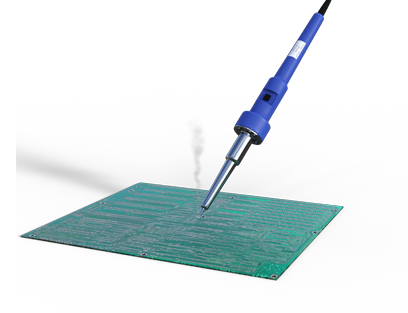1. The difference between soldering FPC and PCB
Assembling components on FPC flexible circuit boards is required, as the smart wearable industry becomes more and more popular, due to the limitation of assembly space, surface mounting of SMD on FPC has become one of the development trends of SMT technology.
Assembling components on FPC flexible circuit boards is required, as the smart wearable industry becomes more and more popular, due to the limitation of assembly space, surface mounting of SMD on FPC has become one of the development trends of SMT technology. However, FPC is more difficult to assemble than PCB because it is not so strong to assemble. Today, let us understand the difference between assembled flexible boards and rigid boards.
1. The welding process
Like the PCB process, through the operation of the stencil and solder paste printer, the solder paste is covered on the FPC and the rigid-flex board. But the surface of FPC is not flat, so we need to use some fixing devices or reinforcement for fixing. We usually paste reinforcement in the component area of the FPC.
2. SMT component placement

Under the current trend of miniaturization of SMT components, small components will cause some problems during the reflow soldering process. If the FPC is small, extension and wrinkles will not be a serious problem, so that the SMT frame can be reduced or marking points can be increased. If you don't want to stick the stiffener to the bottom of the component, you may need flexibility after assembly. Therefore, SMT fixture will be a good choice.
3. Reflow soldering process
Before reflow soldering, the FPC must be dried. This is an important difference between the FPC and PCB component placement process. In addition to the dimensional instability of flexible materials, they are also relatively hygroscopic. They absorb water like sponges. Once the FPC has absorbed the moisture, the reflow soldering must be stopped. PCB also has the same problem, but has a higher tolerance. FPC needs to be preheated and baked at a temperature of 225°-250°. This preheating and baking must be completed quickly within 1 hour. If it is not baked in time, it needs to be stored in a dry or nitrogen storage room.
2. FPC mold
What does the flexible circuit board mold include? And why do we need to open the mold? How many types of molds are there for flexible circuit boards? How to choose a suitable mold for flexible circuit boards? Today, let us understand the flexible circuit board mold together. FPC molds are always used to cut the shape and cover layer of FPC.
For sample production, usually we use laser molding to save customers' cost and time, because if you update the new version, the mold will be unusable, therefore, we will use a laser cutting machine to cut the shape and cover layer. However, the production lead time of laser cutting is longer than that of contour cutting tools, which is why we need to open molds for mass production. Usually, there are only four types of molds in our production process.
1. Normal mold, it is the most commonly used mold for most flexible circuit boards to cut cover layers and shapes. The FPC appearance tolerance is 0.1mm, and the gold finger size tolerance range can be controlled within 0.15mm.
2. Medium-sized screen printing mold: high precision and longer service life. The punching time is about 200,000 times. The punching effect is beautiful and smooth. The tolerance is 0.07mm. But the cost is high, and the mold making time is longer than that of ordinary molds.
3. Precision mold: The surface is very smooth, usually used for flexible circuit boards with very strict tolerances. The gold finger tolerance can be controlled within ±0.05mm. But the cost will also be much higher than ordinary molds.
4. Knife mold: usually used to cut simple flexible circuit boards, flexible circuit boards with a length of more than 500mm, and adhesives. The tolerance is about ±0.2mm.